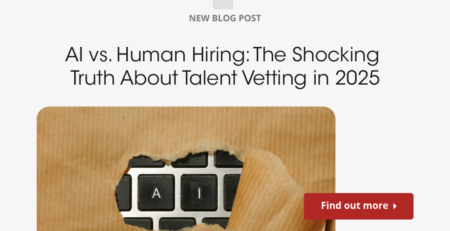How & Why Design-Led Marketing Works
Design thinking is applicable throughout the business process. Building the product and service is the first step, but to attract and maintain customers, companies must also get their message out there with appealing marketing.
Obtrusive ads like pop-ups are a great example of marketing without design thinking. Users are annoyed by them and they’re rarely successful. They interrupt the experience rather than fit into it as an intuitive part or, even better, adding use-value to the customer.
Thinking about marketing in this scope helps simplify outreach strategy and create messaging that is not only appealing but is also desirable for the target audience. Read on to find out all you need to know about design-led marketing, what it is, and why it’s so effective.
What Is Design-Led Marketing?
Ok, you might be thinking, it makes sense that prettier advertisements attract more people. That’s true, but it doesn’t tell the whole story of design-led marketing.
When we speak about marketing and design in this context, we mean design thinking. Design thinking is a process used to first identify users’ needs and problems and then build a product that addressed both. Though it’s become most strongly associated with UX designers, design thinking is used by a broad field of creatives to produce more relevant work.
Design is iterative, which means it’s done in stages. First, find out if there’s a desire for the product you’re building. Then, find out how you can make it better by tweaking certain characteristics and taking the design back to the user for testing and feedback.
Since the process can take many shapes, design thinking has developed as a non-linear process. Much like the scientific method, you can return to an earlier stage of design thinking at any time.
Goals of Design Thinking
Psychology plays a big role in design thinking. The greatest advantage of design thinking is that it helps generate ideas and spur problem-solving while greatly reducing the impact of biases and preconceptions on the part of the designer.
Experimentation and reframing problems are key tenets of design thinking. Because users are brought it from the earliest stages and throughout the design process, tired norms and business-as-usual are less likely to develop.
A properly executed application of design thinking to marketing will give both qualitative and quantitative information for designers to use. Striking a balance in methods leads to a fuller picture of the real users of the product. If you understand how marketing works, it’s apparent why a more informed designer would make more effective promotional material.

5 Steps of Design Thinking
Design thinking doesn’t have a fixed order but it can be described in 5 distinct steps:
1- Empathize
Empathy is what sets user-based marketing and design from purely aesthetic kinds. For designers to account for all the needs and pain points users might have, they have to empathize with users and view them as fully formed, complex people.
This stage of design thinking generally focuses more on broad qualitative research to identify the past experiences and present motivations of the users. The additional perspective will help marketers reach people in authentic and appealing ways.
2- Identify
With that research in hand, designers can identify the problem that their product or service is designed to answer. When it comes to marketing, there should be a direct ideological link between the product or service and the way it’s marketed to potential users.
Identifying problems is a bit trickier for advertising purposes, but suffice it to say that one problem most people experience is a flood of ads when they’re trying to go about their business.
3- Brainstorm
Now that all the information about the users and their experiences has been compiled and synthesized, it’s time for the creatives to come up with some solutions. It’s never too early in this problem-solving phase to start asking the critical question: even once we have a solution, how do we tell people about it?
A marketing strategy that begins in the brainstorming phase for the product or service that it advertises will be more effective because it has more cohesion with the product and the company.
4- Prototype
Putting designs to the test via prototypes is something marketing and design teams have to go through many times in the course of developing one product or campaign. Bringing new ideas or features of an advertising campaign to users to see what piques their interest and holds their attention makes for much more effective marketing.
Once the product is developed to a prototype stage, using user research that gives them a limited look or measures their behavior when they interact with the marketing material is the best way to get quantitative information that can make the advertising even sharper.
5- Test
While prototypes are pared-down versions of the idea, there will eventually come a time when the full product needs to be demonstrated for users so they can give feedback and identify problems. Design thinking isn’t a rigid process, which means you could very well have to return to prototyping or even brainstorming after testing what seemed to be a final product.
Design-Led Marketing is More Effective
Marketing and design go hand-in-hand. Both rely on storytelling and, as people have gotten more and more used to the internet and digital tools in general, a thorough and fluid user experience is essential if you want to stand out against the backdrop of competitors and advertising noise.
Managers and business leaders all over the world have found that integrating customer data into business practices draws in more customers and gives them a much better experience overall. Business marketing has been reduced to stereotypical buzzwords by decades of experts and advisors; design-led marketing breaks away and allows for more innovative problem-solving.
Innovating With Design-Led Marketing
Exactly how marketing works when design thinking is applied may seem a bit opaque to some. Let’s take a hypothetical product to help illustrate how this strategy can be employed to come up with far more innovative communication tools that people will not only pay attention to but seek out.
At the earliest stages of a project, the team should be focused on asking better questions. Let’s say a supermarket company has identified the need for a faster way to shop. A creative team has decided to build an app that will allow users to select what they want to purchase, pull up to a drive-thru during a certain time, offer a QR code to scan and retrieve their items.
Focus groups, interviews, and usability tests were part of the design process for the app itself. Marketing and design can share information learned from users with each other so that both are more effective. But there will more than likely have to be some research unique to marketing because the way users interact with promotional material and the product itself is different.
For example, the marketing team is going to be concerned with how marketing works to inform people about the product. Where are interested users most likely to see the promotion and be willing to receive its messaging? How do they normally respond to ads, and what kind of ads do they prefer? Most importantly, how can an emotional connection be created with advertising?
Back to the grocery store app. Who is more likely to use this app, existing customers of the grocery store, or people who have never been there? Will in-store advertising be effective, and will outdoor in-person advertising be necessary, or is digital marketing enough?
It will take testing and research to identify the actual users of the grocery store and how they behave. But once you have this kind of information, you can use it to make every aspect of the offered products and services better.
Common Concerns With Design-Led Marketing
Managers and other decision-makers who are focused on action tend to get antsy during the research and brainstorming stages of the design thinking process. But with a little patience, they can reap the benefits of careful planning and make a stronger impact on customers, making them more likely to return in the future.
A central purpose of design thinking is to minimize uncertainty. Perhaps because it’s difficult for them to see results or potentially because the ideas resulting from user research can run contrary to their personal biases, some decision-makers reject riskier ideas before they see how marketing works with design thinking to minimize that risk.
One crucial thing to remember is that no one person knows exactly how things will play out. The certainty that a designer, manager, or anyone else already knows what’s best has ruined what could have been great products with designs that didn’t resonate with the users.
The good news is that design thinking provides a structure that makes communication between designers and non-creative stakeholders easier. There are concrete deliverables and if information from research and testing is synthesized in the right way, it can be very illustrative for everyone on the team.
Customer Discovery in Design-Led Marketing
Reaching out to users for product and design development frequently also leads to new customer discovery. It could also be the case that new ways to appeal to existing customers appear after research and testing. For marketing professionals, both forms of discovery could be a gold mine as long as there’s a plan for drumming up interest and curiosity in this newfound customer base.
Business marketing is complicated. While it proliferates all over the internet and in the physical world, many companies take a tried-and-true approach to their marketing and only create messaging in unsurprising forms like billboards, online ads, or coupons.
That’s not to say these strategies don’t work, but if you want to stand out against the competition you have to either stray from common forms of advertising or play with the form in imaginative ways.
Once you discover a problem, demonstrate that your company knows and understands this problem and therefore has the most effective solution. Even if you have tons of products available, don’t list too many options, or else you could overwhelm the viewer and cause them to abandon the ad.
Design Thinking Methods for Business Marketing
As you can probably imagine, there are many ways to apply design thinking to business marketing. Some specific methods that have been shown to work wonders are listed below.
- Immersion
Some user research methods allow designers and others to get an inside look at how users behave and what problems they run into. Users don’t always tell the whole truth or have a good grasp of what their usage habits are, but seeing them in a natural environment allows researchers to identify pain points that even the user may not see.
It’s difficult for researchers to truly be a fly on the wall without creating privacy issues. But immersing themselves in the lives of the users creates more empathy and leads to more creative solutions.
- End-to-End Experience
Simply cataloging your products or services and making an appeal to potential buyers is less and less likely to be enough for survival in present-day product-saturated marketplaces. These days, that’s just not how marketing works. A company’s brand is its personality and it should be recognizable even to people who have never personally engaged with the product.
That branding can come across in marketing and start people on a long road to engagement without them even realizing it. The trick is to find out what they need and build marketing materials that provide them with a small sample of how the product solves problems.
- The Iterative Approach
All the testing and research makes design teams and marketing professionals more flexible in terms of what they can respond to. New information from user responses to marketing material on social media, for example, can be accommodated into new messaging and designs much more quickly.
Design thinking keeps people on their toes and ready to move because they’re always testing things and interacting with users.
- Locate Extreme Users
Find those people who never use your product or used to be repeat users but gave up on it for some reason. They’re the ones most likely to have the strongest opinions and be able to locate their own pain points best. While they aren’t the only people you need to hear from, they are the ones your marketing is impacting the least and it would be best to discover how you can change that.
- More Experimentation & Teamwork
Inventing new messaging is easier when many people are contributing. Large thoughtful teams and the input from many users should create the perfect environment for brainstorming the most creative way to reach out to users and communicate an empathetic message about your product and company.
Since the creatives on the team will be more versatile due to the countless iterations of projects, they’re more likely to take a bit more risk. If you want your marketing material to stand out, that risk-taking is an absolute necessity.
- Artifacts of the User Experience
After the designers have gone through such trouble to build a user experience that will perfectly suit customers and solve their pain points, marketing for the product or service should include artifacts of that user experience. The novelty of the idea may fade with time, but if potential customers have a more detailed idea of what the user experience will be like, they’re more likely to stay curious and invest in the product later.
- Test The Water
New ideas usually stir fear of change. With iterative experimentation, people can test new ideas risk-free. The appeal of the design begins building from the first moment people discover it works well.
Design thinking has allowed marketing professionals the opportunity to test messaging strategies and advertising formats before they are shown to the wider public. User research can be performed with people who may very well become users. If it isn’t as effective as desired, changes can be made.

Conclusion:
Business marketing can be much-improved by design thinking. Communicating with users is much easier when the product has been tailored to meet their needs and research has been done to discover what kind of messaging they’re most receptive to.
Design-led marketing reduces risk just like design thinking does when it comes to product and UX design. It’s a great communication tool that will improve communication between stakeholders, designers, and users, all while enabling the creation of more thoughtful and innovative marketing tools.












